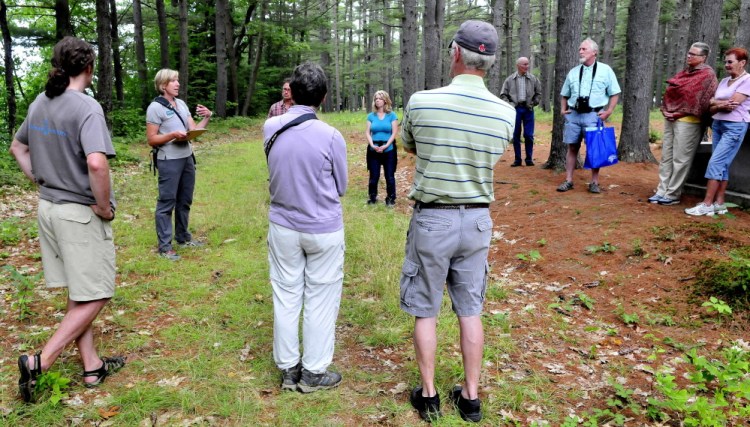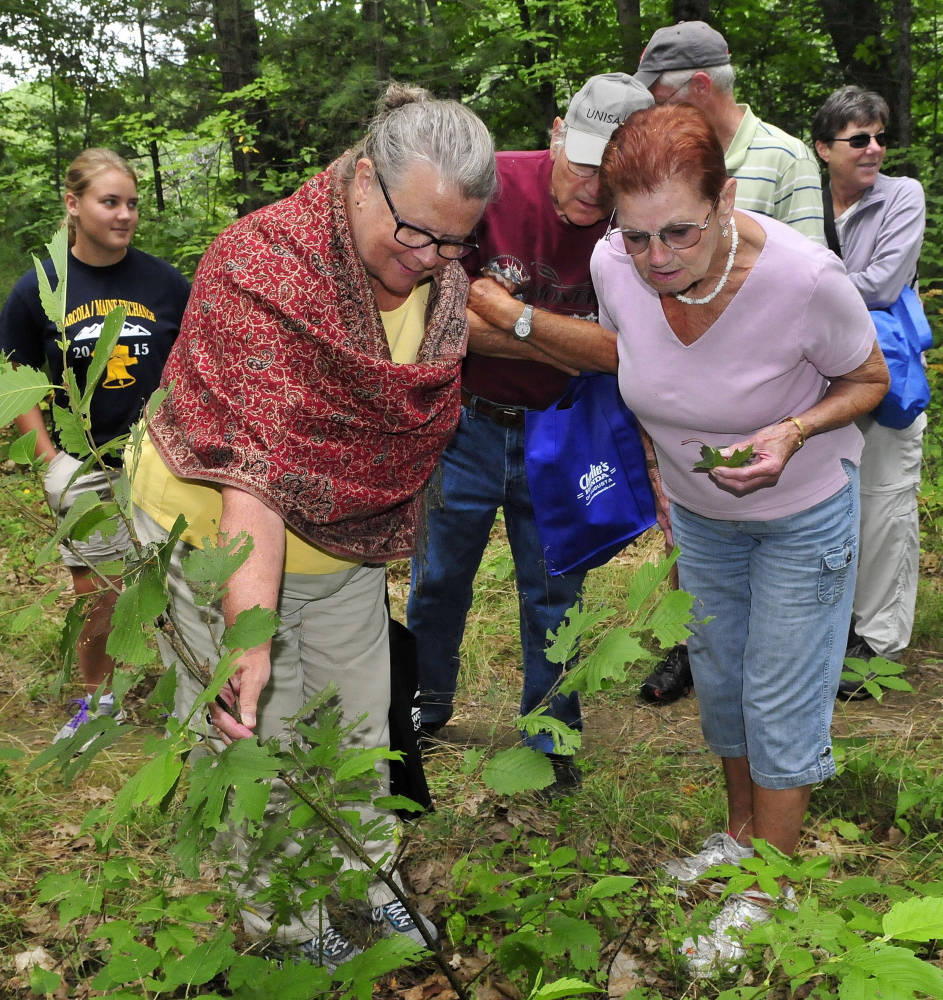MADISON — Sugar maples, red oaks and white pine trees are among the ecological specimens one might find walking through ‘The Pines’ park on Father Rasle Road.
They’re also examples of plants that Abnaki Indians would have used as sources of medicine, food and tools centuries ago, according to Kate Drummond, a Maine Master Naturalist who led a small group of hikers on a walk through the park Sunday morning.
The hike and accompanying history lesson were part of the events planned for the final day of Madison-Anson Days, a yearly celebration commemorating Father Sebastian Rasle, a Christian missionary who died along with 80 members of the Abnaki at the hands of the British in August 1724 in what is now Madison.
“People visit places like Plymouth, Mass., and Pemaquid and they learn about the colonial United States, but I don’t think we necessarily see people here at this site and that’s why I wanted to do this,” said Drummond, who is also a science teacher at Skowhegan Area High School and said that the recent controversy over the changing of the Indian nickname at the school also inspired her to offer Sunday’s event.
“I went to the meeting where the tribal people spoke, and I was really moved by that, so that experience really solidified my decision to do the program here,” Drummond said. “I know very little. I’m certainly not an expert on Native American life, but I’m learning and I’m hoping to share that journey with you.”
As they hiked through the park, which is also home to a monument to Father Rasle and a Native American archaeological site, the small group of participants learned to identify plants that would have been used by Native Americans decades ago.
The inner bark of white pine, for example, would have been used as a food source while the needles could have been steeped in water to make tea, Drummond said.
The acorns from the red oak tree would also have been a food source, as would the sap from the sugar maple. The bark from a plant called speckled alder was used to make dye and the wood from the paper birch tree was used to build canoes, utensils and to make burial wrappings, Drummond said.
Alewives and eels from the nearby Kennebec River would also have been used for food.
“I learned a lot about the history of the area and Native American usage of the plants,” said Leigh Hayes, of Bridgton.
“It was great,” said Paul Frederic, a selectman in nearby Starks, which shares much of its history with Madison. “Having grown up as a local guy a lot of this stuff I already knew, but it’s nice to get reminded of what you know and to realize how much you don’t know. Ecology is so complex. There’s new stuff out there every time you turn around.”
Rachel Ohm — 612-2368
Twitter: @rachel_ohm
Copy the Story LinkSend questions/comments to the editors.





Success. Please wait for the page to reload. If the page does not reload within 5 seconds, please refresh the page.
Enter your email and password to access comments.
Hi, to comment on stories you must . This profile is in addition to your subscription and website login.
Already have a commenting profile? .
Invalid username/password.
Please check your email to confirm and complete your registration.
Only subscribers are eligible to post comments. Please subscribe or login first for digital access. Here’s why.
Use the form below to reset your password. When you've submitted your account email, we will send an email with a reset code.